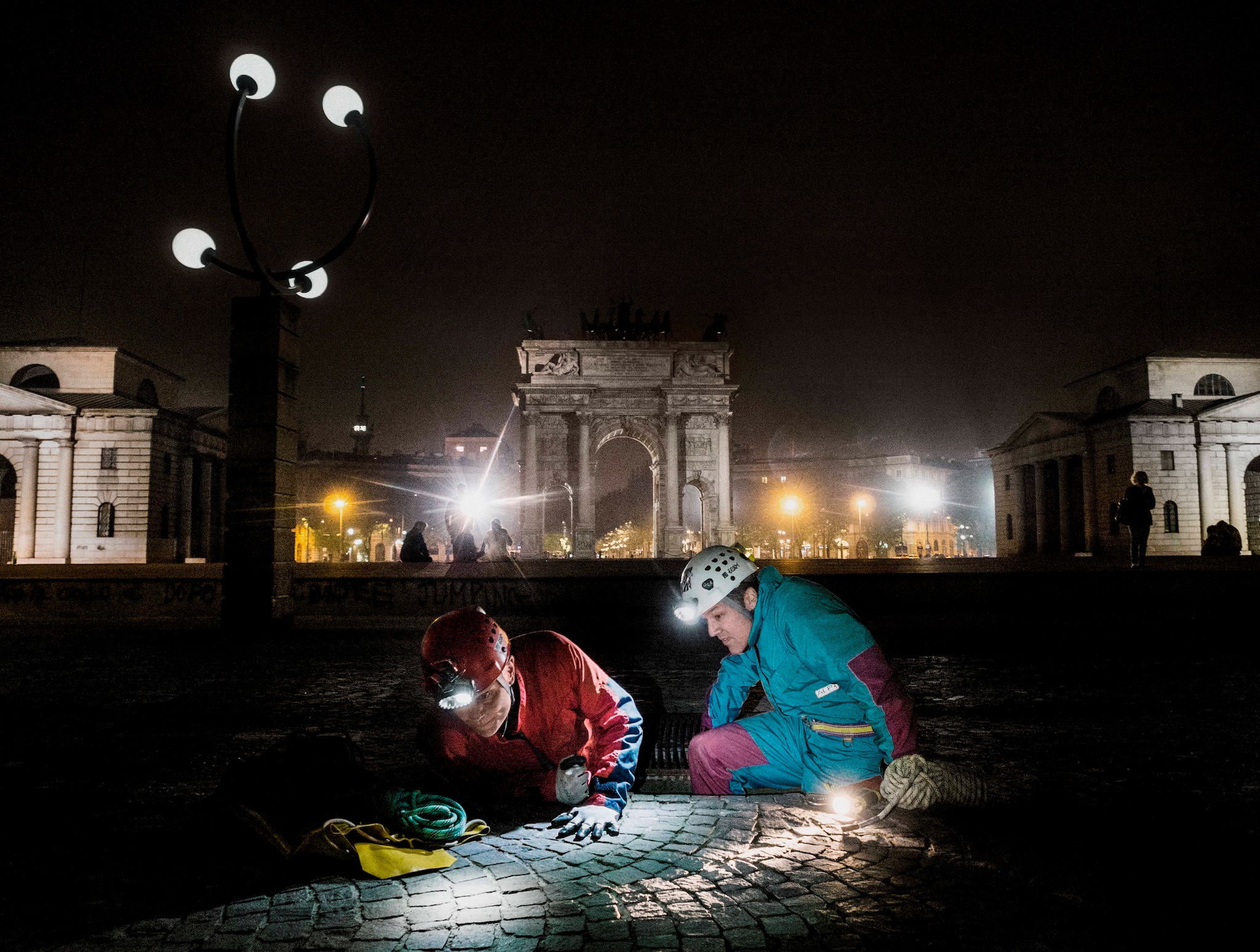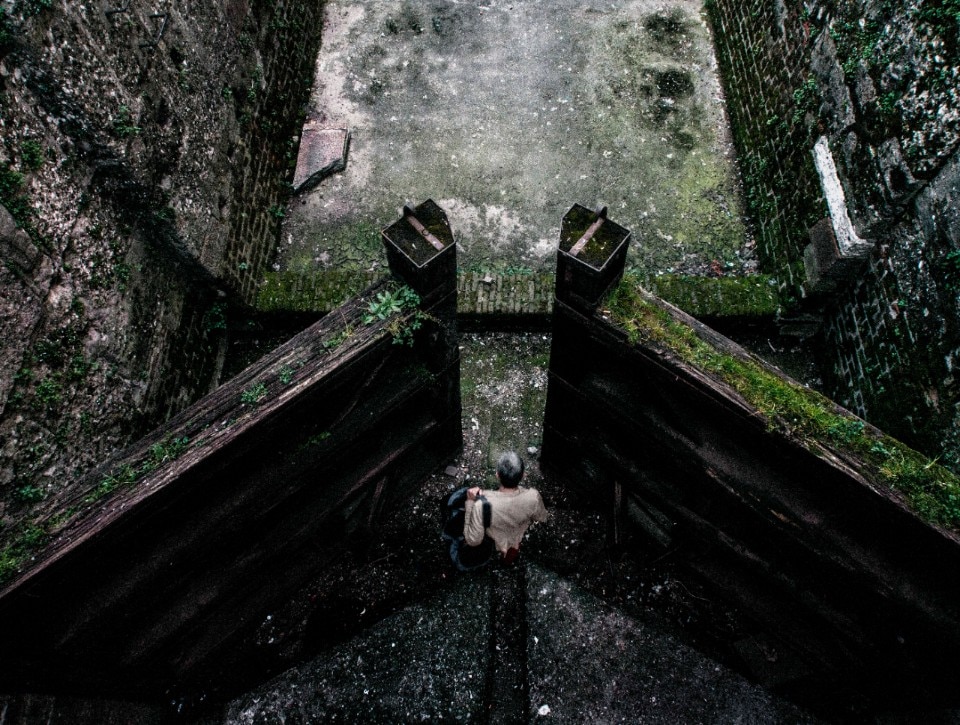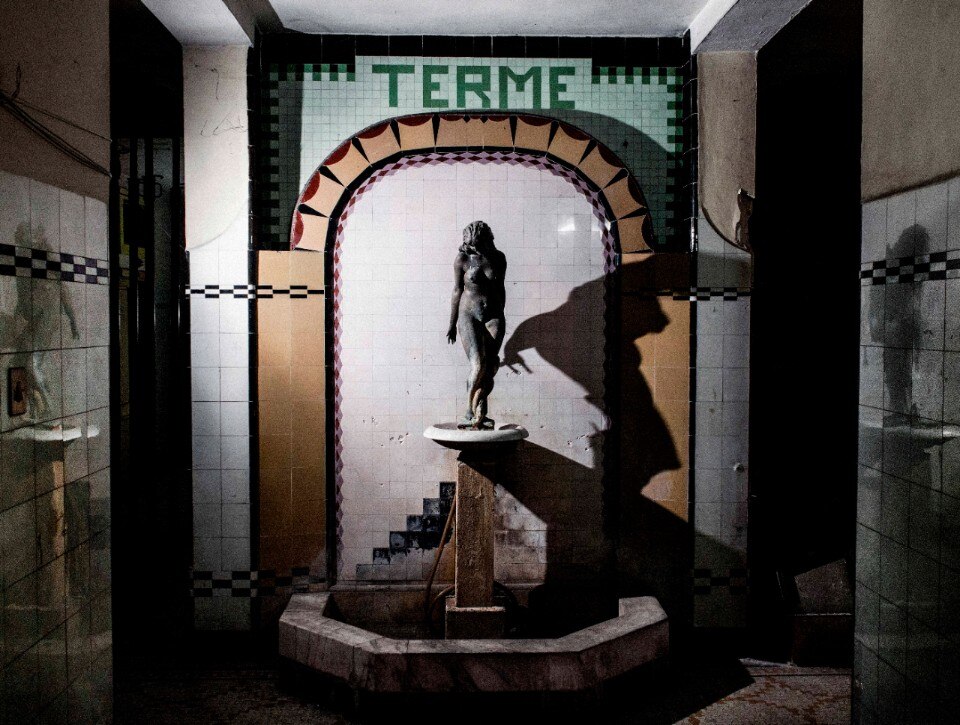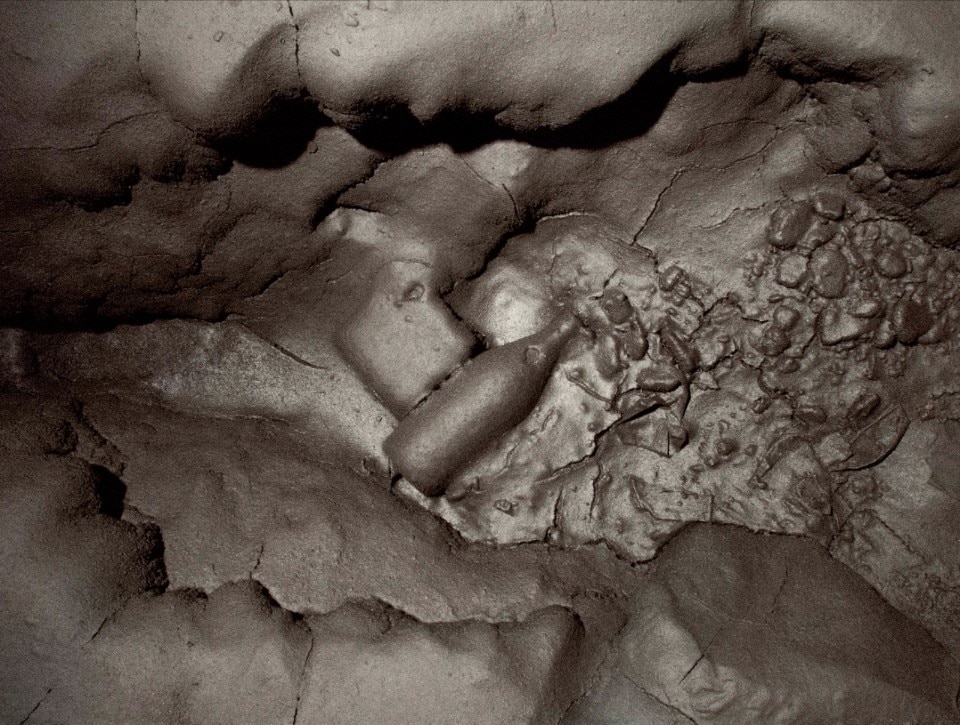A photographer that loves to call himself an “outsider” and the desire to show the most unknown and hard-to-imagine face of Milan. It is from this union that the “Milano underground project” sprouted, an exhibition hosted at the Centrale dell’Acqua museum until October 31st, 2023. “Milano Underground” portrays Gabriele Micalizzi’s journey among the burrows, the shelters, the sewage system of a city that has decided to grow in height and only show the world its surface. Underneath it, though, there is more, something unique, something that Micalizzi’s shots unveil.
“I wanted to show Milan through a different lens,” explains the photographer, who is among the founders of the photo collective Cesura and a long-time cross-disciplinary – for this reason an “outsider” – engaged in work that can take him from the front line of a war to a set for a portrait that will end up on a cover of a glossy magazine, from the routes of migrants to the photoshoot of a fashion brand in a matter of days; and he takes them all on with the same commitment. “I was reflecting on perspectives of Milan that people don’t know and then realized that the city’s underground was one of them.”

 View gallery
View gallery

The photos of the “Milano Underground” project, by Gabriele Micalizzi
Photo Gabriele Micalizzi 2023

The photos of the “Milano Underground” project, by Gabriele Micalizzi
Photo Gabriele Micalizzi 2023

The photos of the “Milano Underground” project, by Gabriele Micalizzi
Photo Gabriele Micalizzi 2023

The photos of the “Milano Underground” project, by Gabriele Micalizzi
Photo Gabriele Micalizzi 2023

The photos of the “Milano Underground” project, by Gabriele Micalizzi
Photo Gabriele Micalizzi 2023

The photos of the “Milano Underground” project, by Gabriele Micalizzi
Photo Gabriele Micalizzi 2023

The photos of the “Milano Underground” project, by Gabriele Micalizzi
Photo Gabriele Micalizzi 2023

The photos of the “Milano Underground” project, by Gabriele Micalizzi
Photo Gabriele Micalizzi 2023

The photos of the “Milano Underground” project, by Gabriele Micalizzi
Photo Gabriele Micalizzi 2023

The photos of the “Milano Underground” project, by Gabriele Micalizzi
Photo Gabriele Micalizzi 2023

The photos of the “Milano Underground” project, by Gabriele Micalizzi
Photo Gabriele Micalizzi 2023

The photos of the “Milano Underground” project, by Gabriele Micalizzi
Photo Gabriele Micalizzi 2023

The photos of the “Milano Underground” project, by Gabriele Micalizzi
Photo Gabriele Micalizzi 2023

The photos of the “Milano Underground” project, by Gabriele Micalizzi
Photo Gabriele Micalizzi 2023

The photos of the “Milano Underground” project, by Gabriele Micalizzi
Photo Gabriele Micalizzi 2023

The photos of the “Milano Underground” project, by Gabriele Micalizzi
Photo Gabriele Micalizzi 2023

The photos of the “Milano Underground” project, by Gabriele Micalizzi
Photo Gabriele Micalizzi 2023

The photos of the “Milano Underground” project, by Gabriele Micalizzi
Photo Gabriele Micalizzi 2023

The photos of the “Milano Underground” project, by Gabriele Micalizzi
Photo Gabriele Micalizzi 2023

The photos of the “Milano Underground” project, by Gabriele Micalizzi
Photo Gabriele Micalizzi 2023

The photos of the “Milano Underground” project, by Gabriele Micalizzi
Photo Gabriele Micalizzi 2023

The photos of the “Milano Underground” project, by Gabriele Micalizzi
Photo Gabriele Micalizzi 2023

The photos of the “Milano Underground” project, by Gabriele Micalizzi
Photo Gabriele Micalizzi 2023

The photos of the “Milano Underground” project, by Gabriele Micalizzi
Photo Gabriele Micalizzi 2023

The photos of the “Milano Underground” project, by Gabriele Micalizzi
Photo Gabriele Micalizzi 2023

The photos of the “Milano Underground” project, by Gabriele Micalizzi
Photo Gabriele Micalizzi 2023

The photos of the “Milano Underground” project, by Gabriele Micalizzi
Photo Gabriele Micalizzi 2023

The photos of the “Milano Underground” project, by Gabriele Micalizzi
Photo Gabriele Micalizzi 2023

The photos of the “Milano Underground” project, by Gabriele Micalizzi
Photo Gabriele Micalizzi 2023

The photos of the “Milano Underground” project, by Gabriele Micalizzi
Photo Gabriele Micalizzi 2023
So Micalizzi, together with a team of urban speleologists, set out in search of openings to enter the subterranean area. And he found them in the most unexpected places – under the Sforzesco Castle, among the fountains in Parco Sempione, in between the naves in the Santa Maria delle Grazie church in Brera – and from there, he descended to a depth of seventeen meters.
“For an Indiana Jones enthusiast like me, it was something incredibly fascinating,” says Micalizzi, “I discovered that many buildings in Milan and almost all public structures, or at least those built in between the World Wars, have an underground level that serves as an air-raid shelter. The Central Station, in addition to the well-known Binario 21, from which the trains deporting Jews departed, has two other additional subterranean levels. And underneath these buildings, it is still often possible to observe intact arrows that indicated in which direction to dig in case the building was bombed.”

It was not just an underground journey but also a way to explore and recreate the historical and cultural stratification of a city. “This was I wanted to do,” explains Micalizzi, “I did not want to make a National Geographic-like job, but I wanted to build a narration that depicted a myth, a legend, a transformation, a set of structures built for a purpose that then, throughout the centuries, were used for new projects. The foundations of a city illustrate this cultural aspect that, often, gets lost on the surface.”
This approach that echoes that of an exploration was portrayed through the images thanks to a particular use of the light. “Those who venture down there do so by using flashlights fixed to their head,” explains Micalizzi, “for this reason, I did not want to illuminate the scene with flashes; there is no diffuse light underground. I preferred using a spot light from hand flashlight, a MagLite, in order to obtain an effect that was closer to the discovery journey I was myself and firsthand undertaking.”



